
How to Choose the Right Molded Case Circuit Breaker for Your Electrical Needs
Choosing the right Molded Case Circuit Breaker (MCCB) for your electrical needs is critical for ensuring both safety and efficiency in electrical systems. According to a report by the International Electrotechnical Commission, the global market for MCCBs is projected to reach $9.5 billion by 2025, driven by increasing demand for energy-efficient solutions and stringent safety regulations in various industries. MCCBs provide essential overcurrent protection, and their selection hinges on factors including current ratings, trip settings, and environmental conditions.
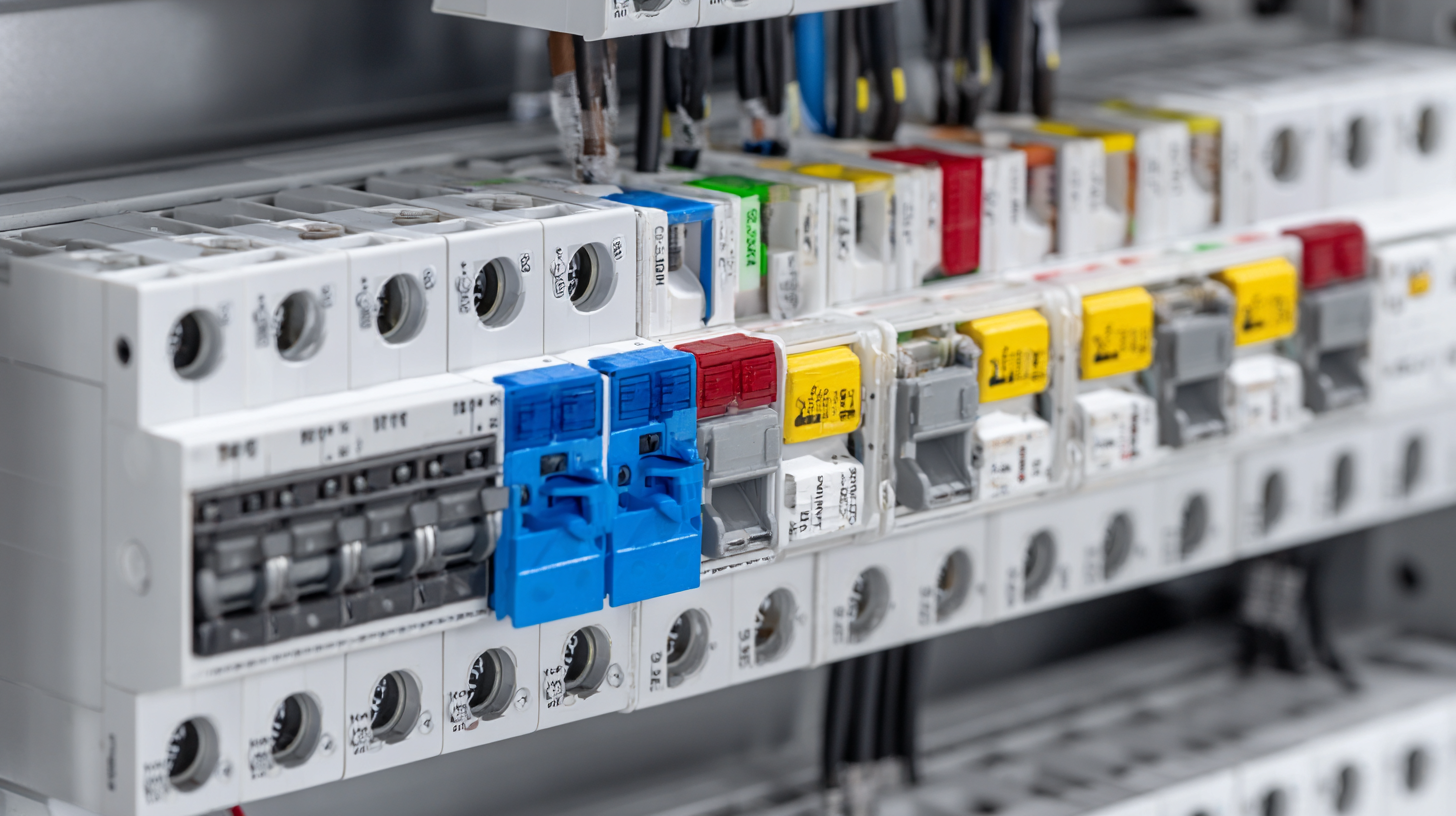
With the rising complexity of electrical installations, understanding the specifications and functionalities of MCCBs is more crucial than ever. This guide aims to equip professionals and end-users with the knowledge needed to select the optimal MCCB that aligns with specific operational requirements, ensuring reliable and safe performance in any electrical environment.
Understanding the Basics of Molded Case Circuit Breakers
Molded Case Circuit Breakers (MCCBs) are essential components in electrical systems, designed to protect against overloads and short circuits. They play a crucial role in safeguarding equipment and ensuring the reliability of electrical installations. According to a report by Research and Markets, the global molded case circuit breaker market is projected to grow significantly, driven by increasing automation and advancements in smart grid technology. Understanding how MCCBs function, including their trip mechanisms and current ratings, helps in selecting the right unit for specific applications.
When choosing an MCCB, consider factors such as the operating environment and the specific electrical requirements of your system. MCCBs come with various features, including adjustable trip settings, which allow users to tailor the protection to their needs. For instance, in industrial settings where power fluctuations are common, an adjustable trip setting can prevent nuisance tripping while still providing adequate protection.
Tip: Always evaluate the ambient temperature and installation conditions, as these can affect the performance of your MCCB. Additionally, assess the future growth of your electrical load to ensure that the selected breaker can accommodate potential expansions. This foresight will save time and costs associated with future upgrades or replacements.
Identifying Your Electrical Load Requirements
When selecting a molded case circuit breaker (MCCB), understanding your electrical load requirements is crucial. Begin by determining the total load of all circuits protected by the MCCB. This involves adding up the current ratings of each connected device and considering their operational characteristics, such as whether they will be running at full capacity or experiencing peak loads intermittently. This analysis will help in selecting an MCCB that not only meets your immediate electrical demands but also accommodates potential future expansions.
Next, consider the nature of the loads, whether they are resistive, inductive, or a combination of both. Inductive loads, such as motors, may require a higher breaking capacity due to their starting current, which can be significantly larger than their running current. Additionally, factor in the environment where the MCCB will be installed, as this can affect its performance and lifespan. By comprehensively identifying your electrical load requirements, you can choose an MCCB that ensures both safety and efficiency for your electrical system.
Evaluating Environmental Factors and Application Needs
When selecting the appropriate molded case circuit breaker (MCCB) for specific electrical needs, evaluating environmental factors is crucial. Just as studies have demonstrated how humidity and temperature affect the performance of low-cost PM2.5 monitors, similar considerations apply to MCCBs. Environmental conditions such as ambient temperature, moisture levels, and the installation site’s exposure to dust or corrosive elements can influence the reliability and effectiveness of circuit breakers. For instance, in high-humidity areas, selecting an MCCB with suitable insulation and protective features can prevent malfunction and ensure safety.
Moreover, the application needs of the project play a significant role in this selection process. Whether the circuit breaker will be used in residential, commercial, or industrial settings can dictate its specifications. Factors such as load characteristics, expected frequency of use, and potential fault conditions must be carefully assessed. Just as various studies explore the environmental impacts in municipal waste management or life cycle assessments in different industries, understanding the operational environment of the electric system will aid in selecting the most efficient and sustainable MCCB.
How to Choose the Right Molded Case Circuit Breaker for Your Electrical Needs
| Feature | Value |
|---|---|
| Current Rating (A) | 15, 25, 50, 75, 100, 125 |
| Voltage Rating (V) | 240, 480, 600 |
| Frame Type | Molded Case |
| Mounting Style | Panel Mount, Din Rail |
| Environmental Rating | IP20, IP65 (NEMA 1, NEMA 4) |
| Trip Settings | Thermal, Magnetic, Adjustable |
| Applications | Industrial, Commercial, Residential |
| Certifications | UL, CE, IEC |
Selecting the Appropriate Voltage and Current Ratings
Selecting the appropriate voltage and current ratings for a molded case circuit breaker (MCCB) is crucial to ensure optimal performance and safety in electrical systems. According to the International Electrotechnical Commission (IEC), the voltage rating of an MCCB must match the system voltage to prevent insulation failure and ensure reliable operation. Typical voltage ratings for MCCBs can range from 240V up to 600V, with some specialized applications requiring higher ratings. For instance, in industrial settings where three-phase power is common, choosing an MCCB rated at 480V can effectively protect motors and heavy equipment from overload and short-circuit conditions.
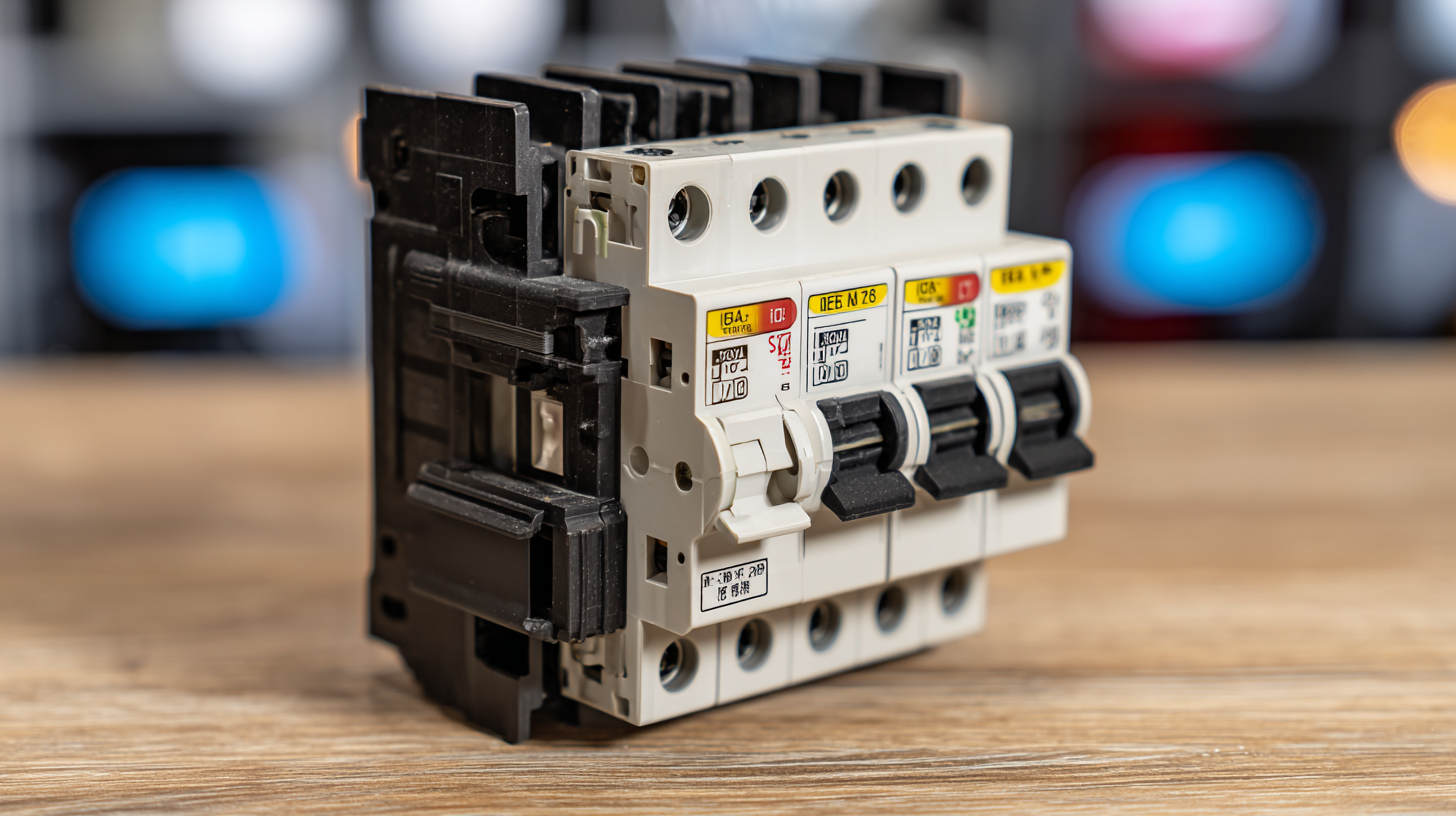
Current rating is another vital factor to consider when selecting an MCCB. The National Electrical Manufacturers Association (NEMA) recommends that the current rating should be based on the maximum anticipated load. An MCCB’s current rating typically falls between 15A and 3,200A, enabling users to select breakers that match their specific requirements. According to a report by MarketsandMarkets, the MCCB market is projected to grow significantly, with an expected CAGR of 6.5% from 2020 to 2025, driven by increased infrastructure development and a greater need for reliable electrical systems. Properly assessing both voltage and current ratings allows for enhanced safety, efficiency, and longevity of electrical installations.
Comparing Features and Benefits of Different Brands and Models
When selecting a molded case circuit breaker (MCCB), it's essential to compare the features and benefits of different brands and models to meet specific electrical requirements. According to industry reports, the global market for circuit protection devices is projected to grow significantly, driven by increasing demand for reliable power management solutions across various sectors. Factors such as user-friendly design, adjustable trip settings, and enhanced monitoring capabilities are crucial in distinguishing the offerings of different manufacturers.
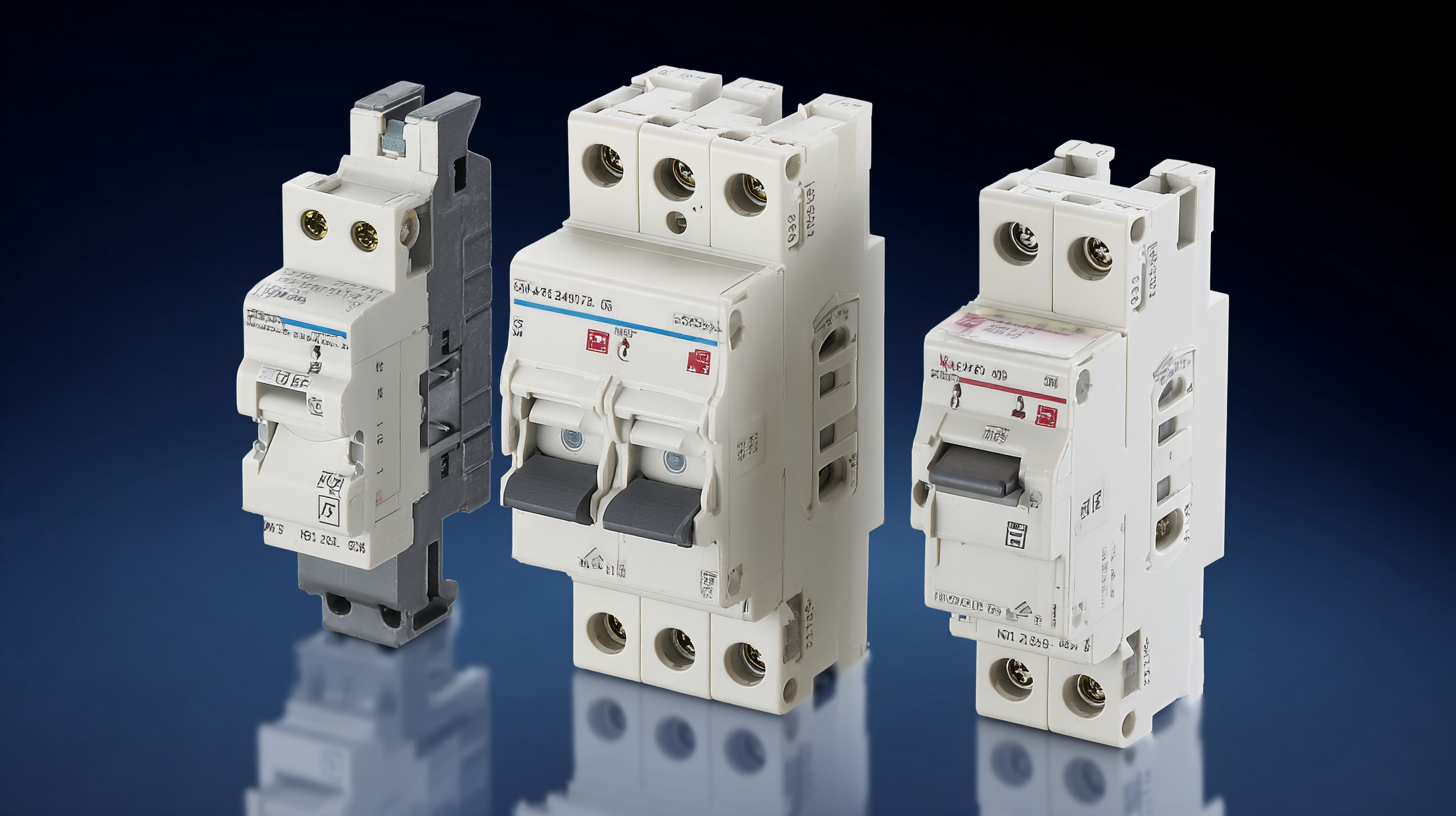
Additionally, expert analyses indicate that energy efficiency and sustainability are becoming pivotal in consumer decision-making. For example, studies have shown that energy-efficient MCCBs can contribute to a reduction in overall operational costs by as much as 20% compared to standard models. Brands focusing on advanced technologies, such as IoT integration for real-time performance tracking, are gaining traction among professionals seeking optimized solutions for their electrical systems.
As the industry shifts toward more intelligent and adaptable designs, understanding these features will empower users to make informed choices tailored to their needs.
Related Posts
-

Top 10 Manufacturers of Molded Case Circuit Breakers (MCCB) in China at the 137th Canton Fair
-

Exploring the Spectrum: Real-World Applications and Innovations in Electrical MCCBs
-

Resilient Growth of Chinese-Made Best Electronic MCCBs Amidst US-China Tariff Strife: An Industry Analysis
-
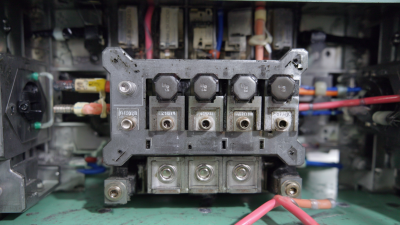
Ultimate Techniques for Selecting the Best Molded Case Breaker in Today’s Market
-

How to Choose the Right MCCB Circuit Breaker for Your Industrial Needs: Key Factors and Data Insights
-
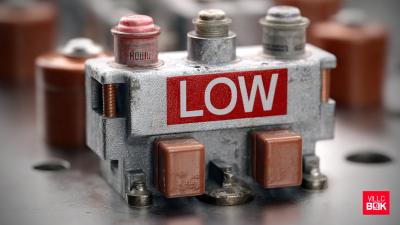
Exploring Unique Alternatives to the Best Low Voltage Circuit Breaker for Your Electrical Needs

 JCB1-125
JCB1-125 JCB2-40M
JCB2-40M JCB3-63DC
JCB3-63DC JCB3-80H
JCB3-80H JCB3-80M
JCB3-80M JCBH-125
JCBH-125 JC125-4P
JC125-4P JCMX
JCMX JCSD
JCSD JCOF
JCOF JCMX1-125
JCMX1-125 JCOF1-125
JCOF1-125 JCSD1-125
JCSD1-125 JCR3HM
JCR3HM JCRD2-125
JCRD2-125 JCRD4-125
JCRD4-125 JCRB2-100
JCRB2-100 JC3RH-2P
JC3RH-2P JC3RH-S
JC3RH-S JC3RH-B
JC3RH-B JC3RH-BS
JC3RH-BS JCR2-63
JCR2-63 JCR1-40
JCR1-40 JCB2LE-80M
JCB2LE-80M JCB2LE-80M
JCB2LE-80M JCB2LE-80M
JCB2LE-80M JCB2LE-40M
JCB2LE-40M JCB1LE-125
JCB1LE-125 JCB3LM-80
JCB3LM-80 JCH2-125
JCH2-125 JCH2-125
JCH2-125 CJX2
CJX2 CJ19
CJ19 JCMCU
JCMCU JCHA
JCHA JCSD-40
JCSD-40 JCSD-60
JCSD-60 JCSP-40
JCSP-40 JCSP-60
JCSP-60 JCSPV
JCSPV WEW1-1000
WEW1-1000 WEW1-1600
WEW1-1600 WEW1-2000
WEW1-2000 WEW1-3200
WEW1-3200 WEW1-4000
WEW1-4000 WEW1-6300
WEW1-6300 DC6-125
DC6-125 AX-400-1250
AX-400-1250 AXAL-400-1250A
AXAL-400-1250A AL-400-1250
AL-400-1250 DC3-160
DC3-160 AXS-400-1250A
AXS-400-1250A SHT-125-160
SHT-125-160 UVT-125-160A
UVT-125-160A P-250A-3P-A
P-250A-3P-A 400-3P/4P terminal cover
400-3P/4P terminal cover 1250-3Pmccb accessories busbar
1250-3Pmccb accessories busbar 250-3P terminal conver
250-3P terminal conver WLM6-TCV-160A-3P
WLM6-TCV-160A-3P WLM6-MIP-250A
WLM6-MIP-250A WLM6-125A-3300 3P/4P
WLM6-125A-3300 3P/4P WLM6-160A-3300 3P/4P
WLM6-160A-3300 3P/4P WLM6-250A-3300 3P/4P
WLM6-250A-3300 3P/4P WLM6-400A-3300 3P/4P
WLM6-400A-3300 3P/4P WLM6-630A-3300 3P/4P
WLM6-630A-3300 3P/4P WLM6-800A-3300 3P/4P
WLM6-800A-3300 3P/4P WLM6-1250A-3300 3P/4P
WLM6-1250A-3300 3P/4P WLM6-1600A-3300 3P/4P
WLM6-1600A-3300 3P/4P WLM6-2000A 3P/4P
WLM6-2000A 3P/4P WLM8-125H-3300
WLM8-125H-3300 WLM8-250H-3300
WLM8-250H-3300 WLM8-400H-3300
WLM8-400H-3300 WLM8-400H-4300
WLM8-400H-4300 WLM8-630H-3300
WLM8-630H-3300 WLM8-630H-4300
WLM8-630H-4300 WLM6RT-125A
WLM6RT-125A WLM6RT-160A
WLM6RT-160A WLM6RT-250A
WLM6RT-250A WLM6RT-400A
WLM6RT-400A WLM6RT-630A
WLM6RT-630A WLM6RT-800A
WLM6RT-800A WLM6RT-1250A
WLM6RT-1250A WLM6E-160A-3300 3P
WLM6E-160A-3300 3P WLM6E-250A-3300
WLM6E-250A-3300 WLM6E-400A-3300 3P/4P
WLM6E-400A-3300 3P/4P WLM6E-630A-3300
WLM6E-630A-3300 WLM6E-800A-3300 3P/4P
WLM6E-800A-3300 3P/4P WLM6E-1250A-3300
WLM6E-1250A-3300 WLM6E-1600-3300 3P/4P
WLM6E-1600-3300 3P/4P WLM6E-2000A-3300 3P/4P
WLM6E-2000A-3300 3P/4P WLM8E-250H-3300
WLM8E-250H-3300 WLM8E-400H-3300
WLM8E-400H-3300 WLM8E-400H-4300
WLM8E-400H-4300 WLM8E-630H-3300
WLM8E-630H-3300 WLM8E-630H-4300
WLM8E-630H-4300 WLM6EY-250-3300 3P/4P
WLM6EY-250-3300 3P/4P WLM6EY-400 3P/4P
WLM6EY-400 3P/4P WLM6EY-630 3P/4P
WLM6EY-630 3P/4P WLM6EY-800A 3P/4P
WLM6EY-800A 3P/4P WLM6EY-1250A 3P/4P
WLM6EY-1250A 3P/4P WLM6ELY-160A
WLM6ELY-160A WLM6ELY-250A
WLM6ELY-250A WLM6ELY-400A
WLM6ELY-400A WLM6ELY-800A
WLM6ELY-800A WLM6ELY-1250A
WLM6ELY-1250A WLM8EY-250H-3300
WLM8EY-250H-3300 WLM8EY-400H-3300
WLM8EY-400H-3300 WLM8EY-630H-3300
WLM8EY-630H-3300 WLM6LY-125A
WLM6LY-125A WLM6L-160A
WLM6L-160A WLM6LY-250A
WLM6LY-250A WLM6LY-400A
WLM6LY-400A WLM6LY-800A
WLM6LY-800A WLM6LY-630A
WLM6LY-630A WLM6LY-1250A
WLM6LY-1250A WLM8LY-125H-3300
WLM8LY-125H-3300 WLM8LY-250H-3300
WLM8LY-250H-3300 WLM8LY-400H-3300
WLM8LY-400H-3300 WLM8LY-630H-3300
WLM8LY-630H-3300 JCB3-63DC
JCB3-63DC JCB1-125DC
JCB1-125DC WLM7DC-250A-2300 2P/3P
WLM7DC-250A-2300 2P/3P WLM7DC-315A-3300 2P/3P
WLM7DC-315A-3300 2P/3P WLM7DC-400A-2300 2P/3P
WLM7DC-400A-2300 2P/3P WLM7DC-630A-3300 3P
WLM7DC-630A-3300 3P WLM7DC-800A-2300 2P/3P
WLM7DC-800A-2300 2P/3P WLM7DC-400A 2300
WLM7DC-400A 2300 WLM7DC-630A-2300 2P
WLM7DC-630A-2300 2P WLM7HU-250-3300 3P
WLM7HU-250-3300 3P WLM7HU-315-3300 3P
WLM7HU-315-3300 3P WLM7HU-400-3300 3P
WLM7HU-400-3300 3P WLM7HU-630-3300 3P
WLM7HU-630-3300 3P WLM7HU-800-3300 3P
WLM7HU-800-3300 3P PV-1500V/250A
PV-1500V/250A WEW3-1600
WEW3-1600 WEW3-2500
WEW3-2500 WEW3-4000
WEW3-4000 WEW3-7500
WEW3-7500



